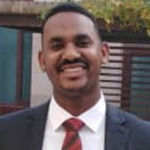In a nutshell
Main Reasons: for a collapsing Sudanese economy in the last 30 years:
- Sudan is being characterized by civil war, political instability, and developmental failure;
- The heavy legacy of the former regime (1989-2018) kleptocratic practices ”Tamkeen and political marketplace” led to state capacity erosion and intuitional failure;
- The partitioning of the country in 2011 and the loss of oil rents, led to sudden stop and its macroeconomic burden; the beginning of the end for the regime;
- The transitional government formed after the December Revolution of 2018 designed an ambitious reform plan aimed at stabilizing the economy and reintegration of Sudan into the international development community;
- 2021 coup resulted in halting the transition to democracy, denying Sudan’s access to international finance, and prevented debt relief through HIPC;
- The ongoing clashes between the Sudanese Armed Forces and the Rapid Support Force since April 2023. wreaked havoc on the economy and exacted untold humanitarian cost on the civilians;
- The war has a considerable cost, under the catastrophic-pessimistic scenario, it takes until 2051 for the GDP to return to its 2022 prewar Conversely, the prewar GDP level is restored by 2046.
- Alternatively, if the war come to an end in 2023, and a fully civilian led government is formed and pursued political and economic reforms, GDP is projected to recover in 2023.
- Rich natural resource base, geostrategic location and vibrant youth constituting 67% of the population.
- Support of international community for democratic transition which will unlock international finance for development.

Authors
Alzaki Alhelo
PhD, Tufts University



